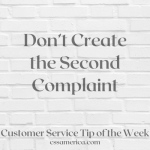The organization needs to improve its culture. Leadership was blind to the issues that were surrounding it and resting on their laurels.
It was obvious that the culture had changed for the worse, leadership was driving in the wrong direction, and the main way to change the culture was going to be to change the people at the top.
So is this a Fortune 500 company? Was it one of the industry leaders in high tech? Was it one of the old-time manufacturers trying to rebound?
No, these organizational issues that sound all too familiar in big business actually were presenting themselves in a professional hockey team.
We are not personally familiar with the Colorado Avalanche and all their issues, so we’re simply noting an article that had its own take on a need for organizational change (Colorado Avalanche: New Front Office Must Show New Direction Quickly). However, the lessons learned still apply. Leadership had issues with player relations, and that impacted fan relations as well as performance on the ice. So the new leadership will need to work to improve those relationships, but the article’s writer noted that the new Team President will “need more than just his word that he cares just as much for the Avalanche (as the local NBA franchise). Actions speak louder than word.”
For any kind of culture change to get everybody going in the same direction, not only does that Vision need to be articulated, but leadership also needs to exhibit the kind of behavior that is expected of others. What leadership in organizations says is only part of what moves it toward the Vision. Look at what leaders’ behaviors really tell you about them and the Vision. Is there alignment or disconnect? Do leaders do what they expect of others? Is there a common purpose and direction?
Before you take that slap shot, make sure you’re pointed at the goal.
Interested in improving team’s Fan Relations and Retention? See more at http://cssamerica.com/csssport.htm





















